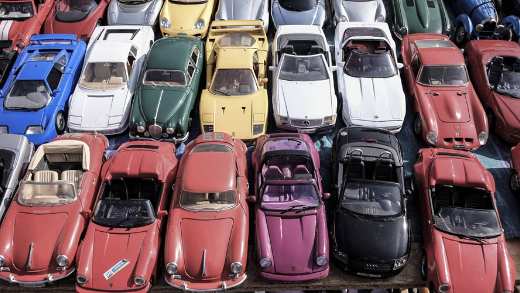Filling up with the wrong type of fuel is a very common mistake to make, with many UK motorists finding themselves in this predicament every year.

If you've put the wrong type of fuel in your car, don't switch the engine on or put the key in the ignition, if you can help it, especially if you've filled your diesel car with petrol. This will help contain the mixed fuel in the tank and stop it from circulating and causing permanent damage.
Several factors affect how much damage using the wrong fuel can cause, from how much fuel you've put in, to whether it has circulated. So, prevent further damage to your car by following our advice below.
How to find out which fuel should I use?
To avoid using the wrong fuel, find out which type is right for your car. You can usually find this information in the user manual on a label inside the fuel door.
Since September 2019, all fuel pumps are legally required to display new labels, replacing the "unleaded" or "diesel" wording.
Petrol pumps now display "E5" inside a circle and diesel pumps show "B7" inside a square.
It may seem slightly confusing, but the new labels are designed to tell you exactly what's going into your car. The letters represent which renewable fuel sources are blended with traditional fossil fuels. E meaning ethanol, and B means biodiesel.
New cars will feature the symbols on or near the fuel filler cap, however don't let the new signage catch you out.
What to do if you've put the wrong fuel in your car
If you're still at the petrol station:
- Don't start your engine or put the key in the ignition
- Put your car into neutral and ask someone to help you push it to a safe place
- Call a recovery vehicle and have an engineer assess the damage
If you've started driving:
Unfortunately, the damage is probably already done. Pull over somewhere safe, remove the keys from the ignition, and call a recovery vehicle.
What happens if I put petrol in a diesel car?
Putting petrol in a diesel tank is far more common than vice-versa because petrol nozzles fit easily into diesel tanks. Unfortunately, this is also the costlier mistake.
Diesel acts as a lubricant and helps the fuel pump run effectively. Petrol, on the other hand, acts as a solvent when mixed with diesel, and has the opposite effect.
The concoction reduces lubrication and causes friction between parts, damaging the pump and engine.
What happens if I put diesel in a petrol car?
Diesel pumps generally don't fit in petrol tanks, so you're far less likely to find yourself in this situation.
While diesel needs to be compressed before ignition, petrol ignites through the spark plugs. This means that putting diesel in a petrol tank will likely result in your car not starting.
Although not ideal, this is a better scenario than putting petrol in a diesel tank, which causes expensive and permanent damage.
Is misfuelling covered by my car insurance?
Not many car insurance providers cover misfuelling as standard. Some may cover misfuelling as part of accidental damage, but if not, you can ask about adding it to your policy at an additional cost.
How to avoid putting the wrong fuel in your car
There are ways to reduce the chances of misfuelling and save yourself a considerable amount of money, time, and bother:
- One of the most common times misfuelling occurs is when you've got a new car that uses different fuel to your previous one. It might be worth having an eye-catching reminder sticker in the car or on the petrol cap
- Always make sure you read the pump's label before filling up
- Avoid distractions while filling up
If you own a diesel car, buy a diesel fuel cap that will prevent petrol nozzles from fitting in the tank. These are available for less than £30 - a small price to pay compared to a hefty repair bill


.$16x9-mobile-4cols$.jpg?$16x9-mobile-4cols$)

